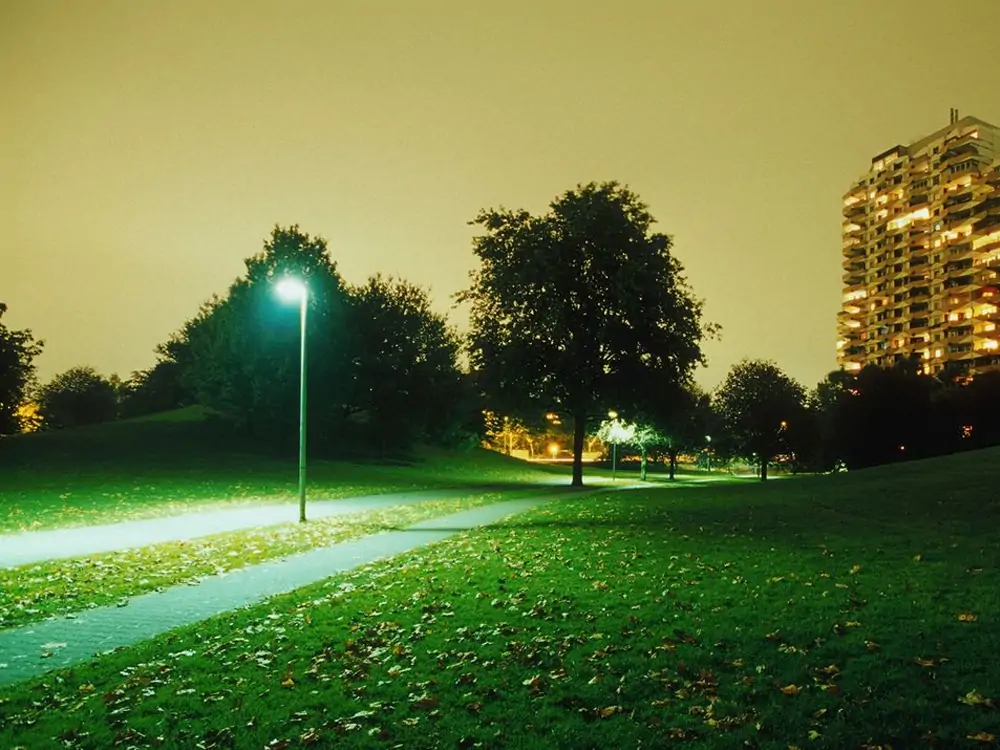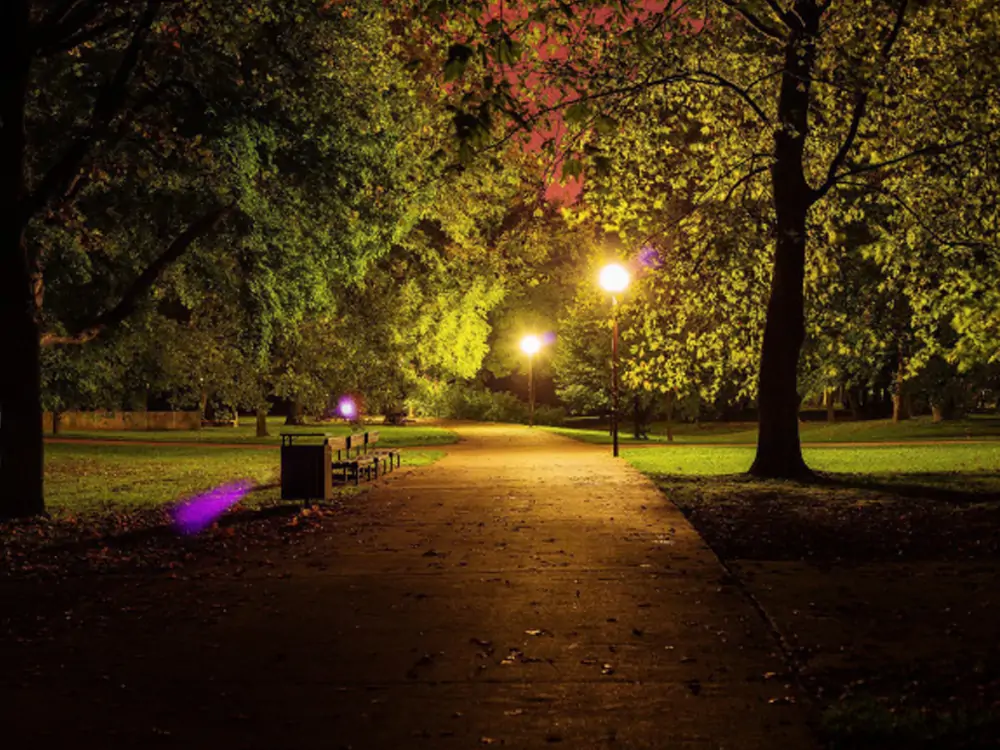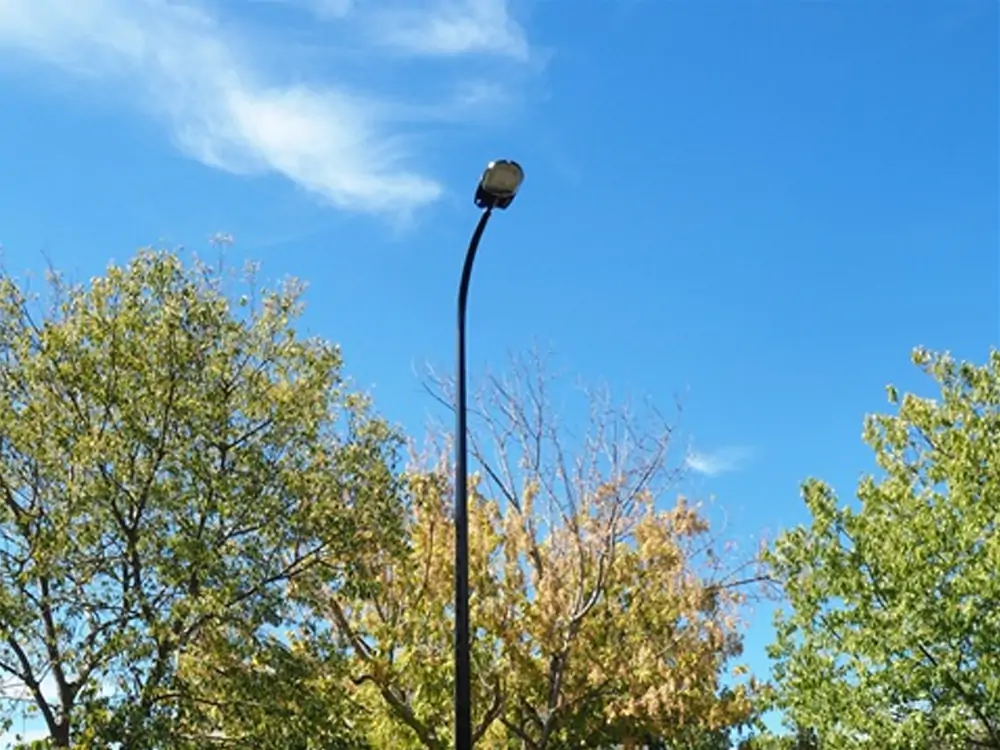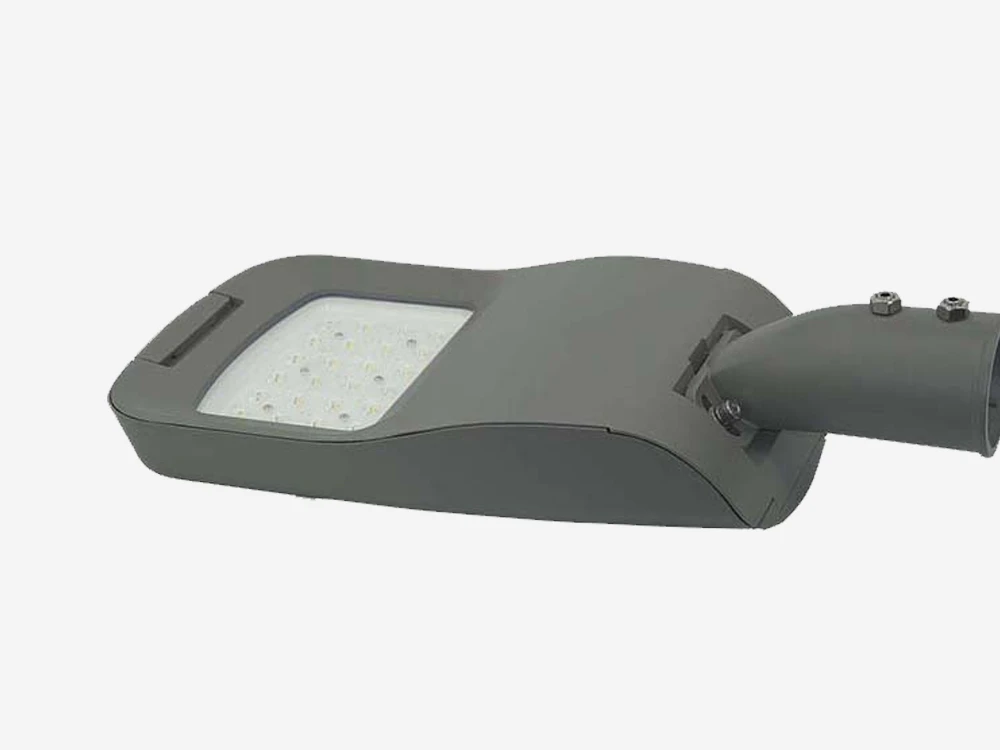Straatverlichting verlicht onze omgeving en houdt ons veilig. Heb je echter wel eens nagedacht over de mogelijkheid dat straatverlichting niet helemaal ongevaarlijk is? Heb je je ooit afgevraagd hoe ze, behalve verlichting, de natuur beïnvloeden? In dit artikel wordt specifiek ingegaan op de effecten van straatverlichting op planten rond lantaarnpalen. Zal straatverlichting de bloei beïnvloeden? Welke stappen kun je nemen om eventuele negatieve gevolgen te beperken? Lees verder voor meer informatie.
Heeft straatverlichting invloed op de bloei?

Planten zijn gevoelig voor licht. Ze gebruiken het voor fotosynthese, maar dat is niet alles. Planten zijn ook afhankelijk van licht om het begin van biologische processen zoals bloei aan te geven.
Veel planten vertrouwen op de natuurlijke dag- en nachtcyclus om te weten wanneer ze moeten bloeien. Dit wordt fotoperiodicisme genoemd. Sommige planten bloeien als de dagen korter zijn, terwijl andere bloeien als de dagen langer worden. Er zijn ook dagneutrale planten die niet afhankelijk zijn van de daglengte om te bloeien.
Stel je voor dat je een plant bent die onder de straatlantaarns groeit en de hele nacht licht krijgt. Dit kan je interne klok in de war brengen en de bloei voorkomen of vertragen.
Zo hebben kortedagplanten dagelijks een bepaalde hoeveelheid duisternis nodig om in bloei te komen. Wanneer straatlantaarns hun lichtbundels op de bloemen rond lantaarnpalen werpen, laat dit ze denken dat het nog dag is. Als gevolg daarvan bloeien de bloemen onder de lantaarnpalen niet wanneer ze zouden moeten bloeien. Langedagplanten bloeien misschien vroeger dan normaal of blijven langer bloeien dan zou moeten. Dit klinkt misschien geweldig, maar het kan meer kwaad dan goed doen. Planten die op het verkeerde moment bloeien, hebben misschien niet de juiste bestuivers in de buurt. Ze kunnen ook zaden produceren wanneer het te koud is om te overleven.
Hoe ernstig is het probleem?

Je denkt misschien: "Zal straatverlichting de bloei beïnvloeden? Zelfs als dat zo is, is dat toch niet zo erg?". Maar bedenk dit: kunstlicht neemt 's nachts jaarlijks met 2% toe. Op sommige plaatsen in de wereld groeit dit zelfs nog sneller. Dit betekent dat steeds meer planten 's nachts worden blootgesteld aan straatverlichting.
Effecten van straatverlichting zijn niet beperkt tot bloemen rond lantaarnpalen. Lichtvervuiling kan zich veel verder verspreiden dan de directe omgeving van een lichtbron. Dus zelfs als je een straatlantaarn niet kunt zien van waar je staat, kunnen sommige planten in de buurt er toch last van hebben.
Soorten straatverlichting voor planten
Verschillende soorten straatverlichting hebben verschillende effecten op planten:
Halogeenmetaaldamplampen: Deze lampen produceren een helder, wit licht. Dit licht is zeer verstorend voor de fotoperiodes van planten en kan een aanzienlijke vertraging in de bloei veroorzaken.
Hogedruknatriumlampen (HPS): Deze lampen stralen een geeloranje gloed uit en kunnen een lichte bloeivertraging veroorzaken bij korte-dag planten. Het effect is echter minder intens dan bij andere lichtsoorten.
LED-verlichting: LED-straatverlichting wordt steeds populairder vanwege de energiezuinigheid. Ze licht uitzenden in een breed spectrum. Deze kunnen de cycli van planten meer verstoren, vooral als ze zich in het blauwe of witte lichtspectrum bevinden.
Hoe kan ik het effect van straatverlichting op planten verminderen?

1. Gebruik lichtschermen:
Installeer afschermingen op de lantaarnpaal om het licht naar beneden te richten. Zo verminder je het licht dat je plant 's nachts bereikt.
2. Gebruik lampen met een lage impact (LED-systemen):
Een andere manier is om opties te gebruiken die weinig impact hebben, zoals LED-straatverlichting. Deze apparaten zijn energiezuinig en kunnen worden ingesteld op de juiste kleurtemperatuur voor planten. Warmere kleurtemperaturen tussen 2700K en 3000K hebben minder invloed op bloemen dan koele lampen.
LED systemen kunnen ook worden gedimd tijdens daluren om de impact op het milieu te verminderen. Bovendien produceren ze minder warmte dan traditionele verlichting. Dit kan helpen om een meer natuurlijke temperatuur rond planten te handhaven.

Luxueus is een trotse fabrikant van LED-straatverlichting van hoge kwaliteit. We leveren al meer dan dertig jaar superieure producten. Als je op zoek bent naar meer energie-efficiënte opties, neem dan contact met ons op.
3. Gebruik slimme verlichtingssystemen:
Je kunt bewegingssensoren installeren om de verlichting alleen te activeren wanneer dat nodig is. Hierdoor blijft een straatlantaarn minder lang branden en is er minder lichtvervuiling.
Je kunt ook timers en adaptieve verlichting implementeren. Deze instellingen verminderen de lichtintensiteit 's nachts en passen deze aan op basis van de weersomstandigheden.
4. Spectrale aanpassingen:
Gebruik filters op lampen om blauwe golflengten te verwijderen, die het grootste effect hebben op planten. Pas de spectrale samenstelling aan naar een warmere tint. LED-lampen worden meestal geleverd met aanpasbare instellingen, dus je hoeft ze alleen maar aan te passen.
Conclusie
Zoals je kunt zien, is het antwoord op de vraag "Zal straatverlichting invloed hebben op bloei" is niet gewoon ja. Straatverlichting kan bloei en plantengroei inderdaad op veel manieren beïnvloeden. Dit betekent echter niet dat je geen mooie tuin kunt aanleggen rond lichtmasten of -palen. Door de effecten van kunstlicht te begrijpen en je planten verstandig te kiezen, kun je een prachtig plantenspectrum creëren, zelfs in gebieden met kunstlicht.
Onthoud dat de planten om je heen voortdurend reageren op hun omgeving terwijl jij je dag doorbrengt. Bedenk daarom voordat je een straatlantaarn installeert wat voor effect deze zal hebben op de toekomstige buren (de planten). Met een doordacht ontwerp en plantenselectie kun je goed verlichte ruimtes en gezonde planten creëren. Het gaat erom de juiste balans te vinden tussen onze behoefte aan licht en de behoeften van Moeder Natuur.
Naarmate onze steden blijven groeien, zal het een uitdaging zijn om een evenwicht te vinden tussen de behoefte aan kunstlicht en de gezondheid van onze natuurlijke omgeving. toets uitdaging. We kunnen omgevingen creëren die mensen en planten ten goede komen door middel van smart planning en weloverwogen keuzes.